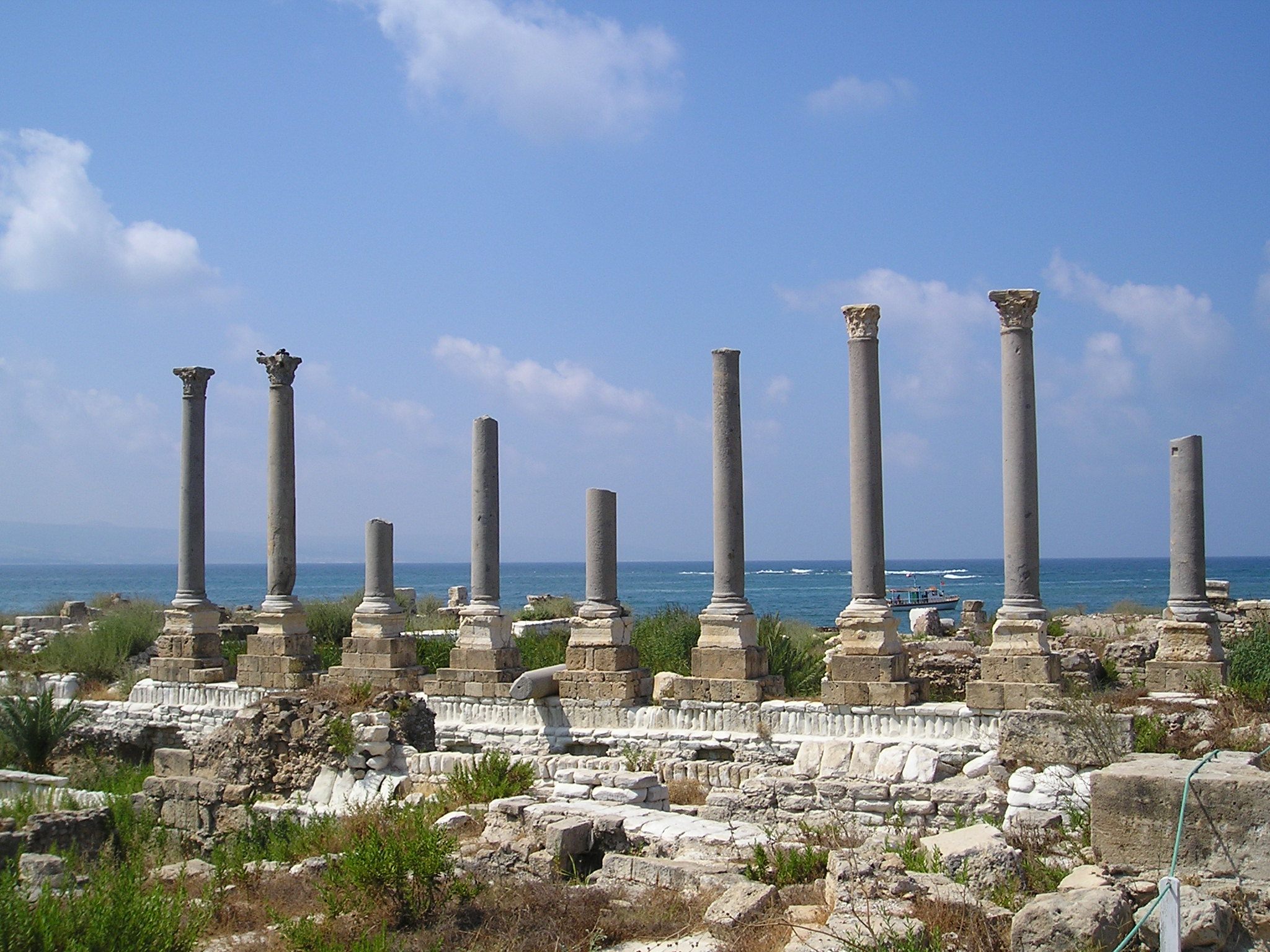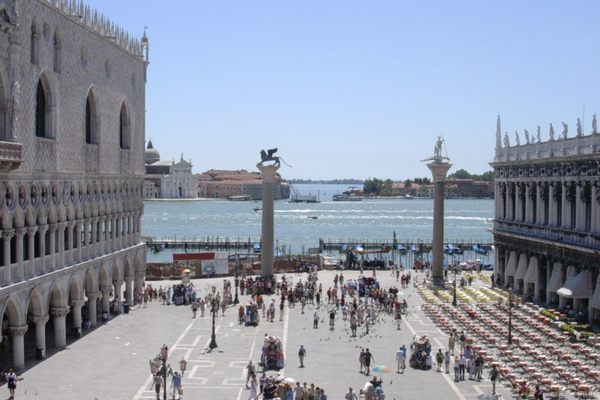Here Are the Mediterranean Sites That Will Be Swallowed By the Sea
Coastal erosion and flooding are bad news for these ancient places.

As waters rise across the world, they will swamp and destroy the things we humans have made. Bones will be disinterred from graveyards; buildings will rot and fall; ancient settlements will vanish. While researchers are already scrambling to buffer some of these sites and shore them up against insistent wind and waves, not everything can be saved. And when a site’s currency is tied to its geography, it’s not easy to pick it up and move it to higher ground. So how do you prioritize your efforts—and figure out which sites are in desperate need of lifelines?
In a new paper in Nature Communications, a team led by Lena Reimann, a geographer at Germany’s Kiel University, let data lead the way. They mapped the potential threat that flooding and erosion caused by sea-level rise could wreck by the year 2100 on 49 UNESCO heritage sites across the Mediterranean. The researchers modeled four different scenarios for sea-level rise and coastal erosion across Italy, Croatia, Greece, Tunisia, and more, based on different levels of greenhouse gas concentrations. Then they ranked how dire the situation would be for each heritage site.
What are these places up against? Even in the most conservative conditions that the authors modeled, the future doesn’t look good—and, moreover, the authors also found that many of these sites facing future threats are already in a danger zone. Under current conditions, more than 90 percent of these sites are at risk. Only the hundreds of mosques, monuments, and fountains of Medina of Tunis and the ancient Lycian archaeological site of Xanthos-Letoon dodged the threats of both erosion and flooding.
According to these models, the situation will only get worse. Steep topography often constrained settlements to areas close to the water’s edge, almost flush with sea level. Under the high erosion scenario, erosion will bring these sites even closer to the coast—in the model’s worst-case scenario, the average distance from the water drops by 90 percent.

The highest erosion risk is at the Phoenician city of Tyre, which has a perfect storm of vulnerabilities, including proximity to the coast, a profusion of sandy material, and high waves. In the highest flood scenario, the worst repercussions will be felt in Venice, where the famous lagoons will be a liability. During storm surges, up to 98 percent of Venice and the lagoon may be deluged, Reimann says in an email interview. That water may recede—but depending on the amount of sea-level rise, Reimann adds, “certain parts of the [site] are likely to be submerged permanently in the future if no adaptation takes place.”
Putting a price tag on history understandably makes some people a little squirmy. (The authors describe it as “ethically questionable.”) After all, how do you do measure value without implying that one history is more important than others? “However, if appropriate local-scale data are available,” the authors write, “it may be possible to assess the tangible costs of coastal flooding and erosion by accounting for, for example, loss of revenue or cost of repairs.”
The authors champion strategies for raising awareness among the public and lawmakers, as well as covert adaptation strategies, such as submerged floodgates that will rise against high waters in the Venice lagoon. This is an expensive intervention and has stirred local controversy, Reimann says. There are fears, on one hand, that it’s too speculative, and, on the other, that it won’t be enough to curb the flooding. It’s also probably among the earliest of many efforts in the same vein. “Generally, I would expect that innovative adaptation measures will need to be pursued to preserve our common heritage,” Reimann adds.
Some of these adaptations are nothing to write home about, aesthetically—the Venetian gates look like half-sunken construction barricades. In areas that depend on tourist eyeballs, appearances do matter. But maybe visitors will come to expect and embrace more-visible signs of adapting to a more-watery world. Maybe these could even be a little reassuring—a reminder that there are tangible steps that can be taken to help these sites stick around a little while longer.





















Follow us on Twitter to get the latest on the world's hidden wonders.
Like us on Facebook to get the latest on the world's hidden wonders.
Follow us on Twitter Like us on Facebook